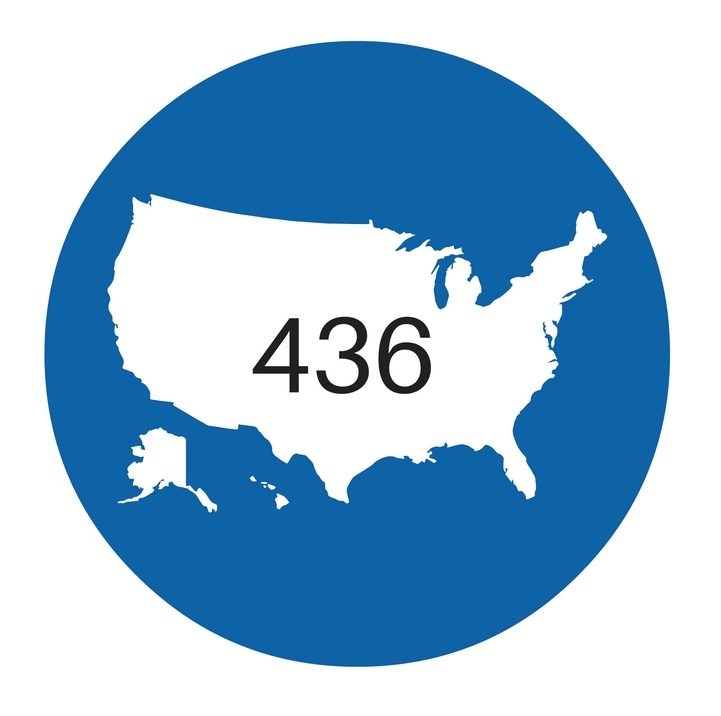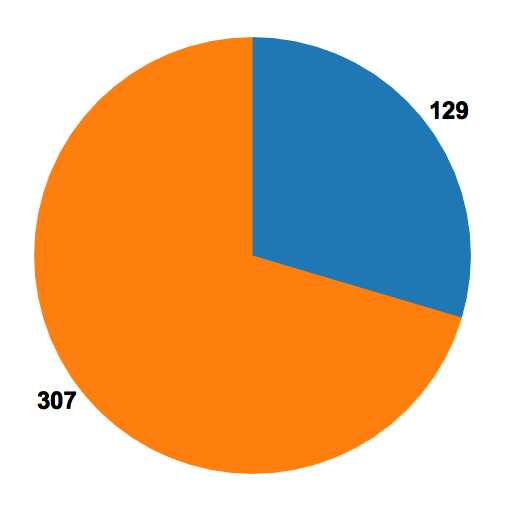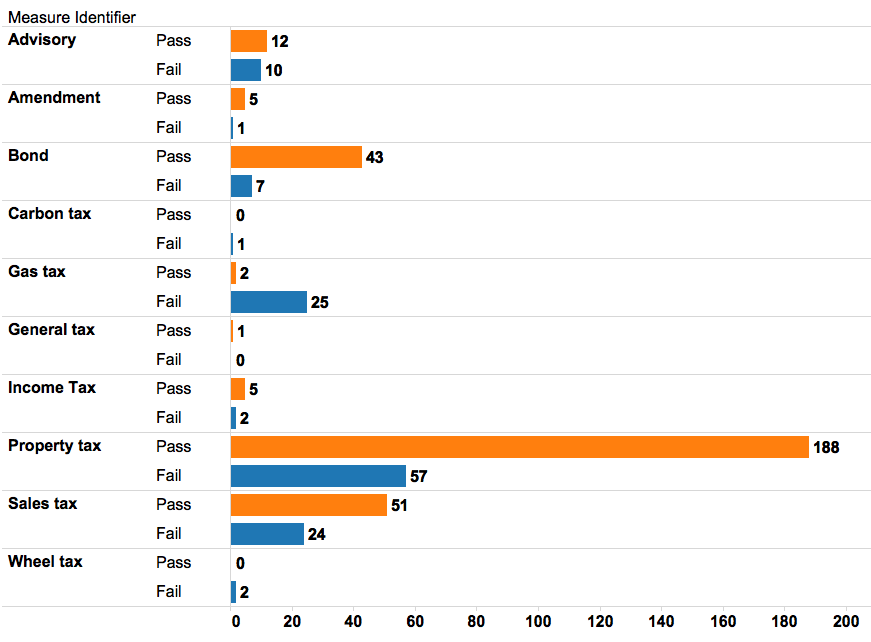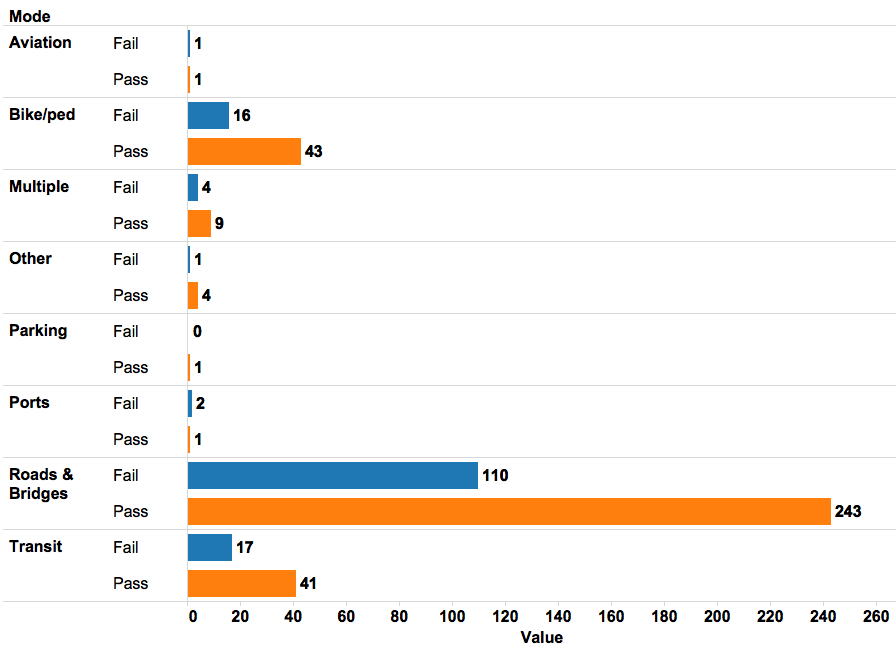Eno compiled and reviewed all the results from transportation ballot measures that went before voters across the country on Election Day. Based on our research, we assembled some statistics to show how these measures fared nationwide. While there is much more to track and distill, the figures below provide a glimpse into the public opinion surrounding transportation at the state and local level.
You can view our database of measures and results here.
Total Number of Ballot Measures and Overall Pass Rate
On Election Day, voters decided on 436 transportation ballot measures across the country totaling at least $250 billion and which spanned all modes of transportation. The final results show that 70.4% of the measures passed. The ballot measures supported all modes of transportation, from roads and rails to ports and bikes.
Total Number of Ballot Measures

Overall Pass/Fail Count (Orange = Pass, Blue = Fail)

States With the Most Ballot Measures
Thirty-four states had transportation measures on their ballots either at the state, metropolitan, or local level. Of those, Ohio and Michigan had the most with the majority of their measures addressing an increase in local property taxes to fund road improvements and maintenance. Interestingly, California had the third most even though state law requires super-majority voter approval to pass any special tax increases for transportation purposes (i.e. 66 percent approval). Of the 35 measures on the ballot in California, 23 received a super-majority.
- Ohio – 160
- Michigan – 79
- California – 35
- Colorado – 19
- Washington State – 18
Pass or Fail by Measure Identifier
Voters were presented with multiple potential sources to raise revenue for transportation. Of these, property tax measures were—by far—the most popular given their prevalence in Ohio and Michigan. About three-quarters of these passed. Bond measures performed the best (86 percent passed) but of the 27 gas tax ballots measures only 2 were successful. Notably, localities in Nevada accounted for 16 of the gas tax measures but only one passed (Clark County).

Pass or Fail by Mode
While transit garnered a lot of attention and did well on Election Day, the majority of ballot measures covered our ailing roads and bridges. Based on the pass rate, the public strongly supports fixing their local infrastructure. Bike and pedestrian-related measures also did well. However, it is worth noting that many of these ballot measures bundled together different modes, especially roads and bridges with bike/ped projects. Therefore its hard to say on some measures whether there is a modal preference.

If you have questions regarding our transportation ballot measures database, please contact Alexander Laska at publicaffairs@enotrans.org







